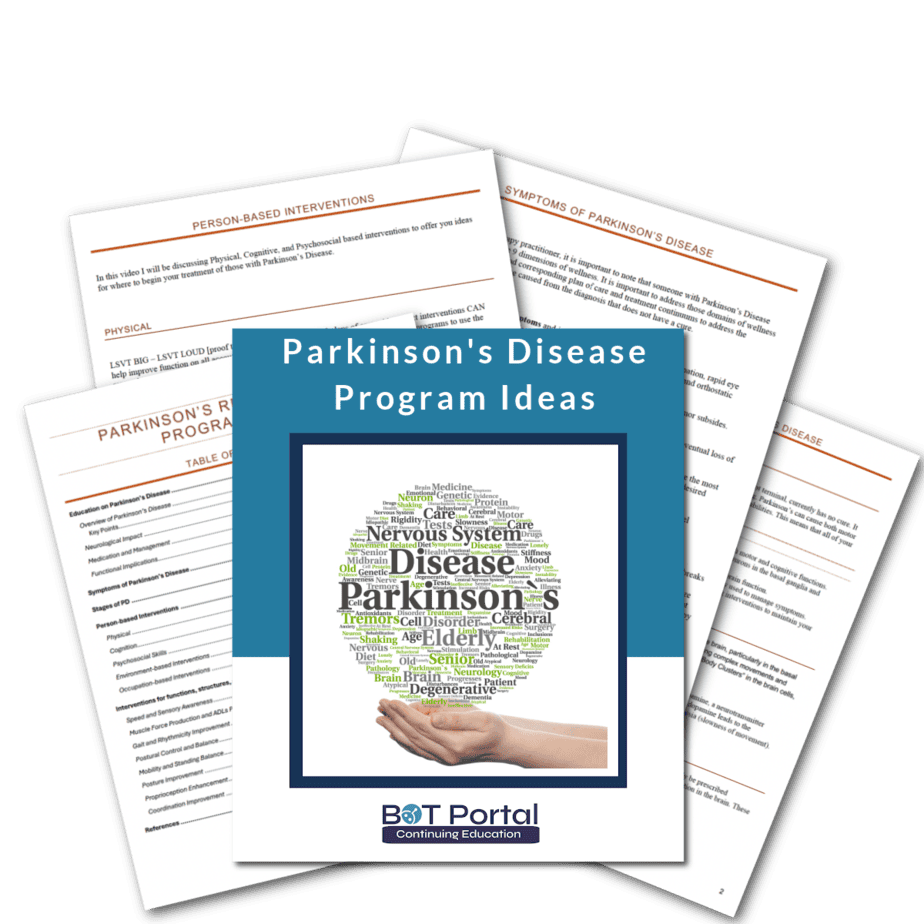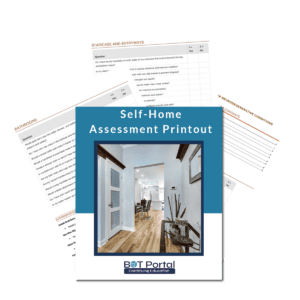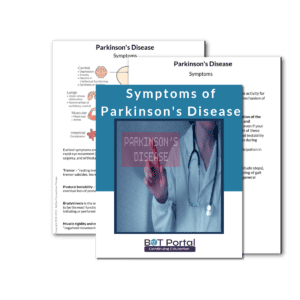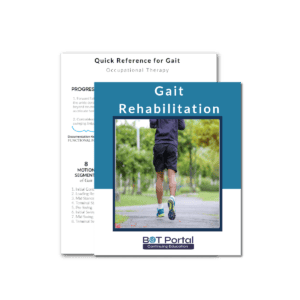Description
Parkinson’s Disease Program Ideas
Parkinson’s Information and Interventions in Rehabilitation
Parkinson’s disease is a neurodegenerative disorder that affects movement and is characterized by symptoms such as tremors, stiffness, slowness of movement, and difficulty with balance and coordination. While there is currently no cure for Parkinson’s disease, there are various Parkinson’s Disease interventions available to manage symptoms and improve quality of life for individuals living with the condition.Parkinson’s Disease Interventions
- Medications: Medications are often the first line of treatment for Parkinson’s disease. They work by replenishing or mimicking dopamine, a neurotransmitter that is deficient in Parkinson’s patients. Levodopa, a precursor to dopamine, is one of the most effective medications for controlling symptoms. Other medications, such as dopamine agonists, MAO-B inhibitors, and anticholinergics, may also be prescribed to help manage motor symptoms and improve mobility.
- Deep Brain Stimulation (DBS): Deep brain stimulation is a surgical procedure that involves implanting electrodes into specific areas of the brain that control movement. These electrodes deliver electrical impulses to regulate abnormal brain activity and alleviate Parkinson’s symptoms. DBS can be particularly beneficial for individuals who experience motor fluctuations or dyskinesias despite optimal medication management.
- Physical Therapy: Physical therapy plays a crucial role in managing Parkinson’s symptoms and maintaining mobility and independence. Physical therapists work with individuals to improve strength, flexibility, balance, and gait through targeted exercises and activities. They may also teach techniques to enhance functional mobility and reduce the risk of falls.
- Occupational Therapy: Occupational therapy focuses on helping individuals with Parkinson’s disease perform daily activities more independently and efficiently. Occupational therapists may recommend adaptive equipment, such as mobility aids or utensils with larger handles, to make tasks easier to complete. They also provide strategies to overcome challenges related to fine motor skills, handwriting, and activities of daily living.
- Speech Therapy: Speech therapy can help individuals with Parkinson’s disease address communication difficulties, such as slurred speech, monotone voice, and difficulty swallowing (dysphagia). Speech therapists provide exercises to strengthen the muscles involved in speech and swallowing, as well as techniques to improve articulation, voice projection, and swallowing function.
- Exercise and Lifestyle Modifications: Regular exercise is beneficial for managing Parkinson’s symptoms and improving overall health and well-being. Activities such as walking, cycling, swimming, and tai chi can help maintain mobility, flexibility, and cardiovascular fitness. Additionally, adopting a healthy lifestyle, including a balanced diet, adequate sleep, stress management, and social engagement, can support overall health and symptom management.
What is included?
- 10-page plain text Parkinson’s Disease Program idea (These are illustrated in a different program)
- 10-page packet in patient language
- 1 page illustration handout for patient
Parkinson’s Disease Interventions
.Other Useful Links:
Check out BOT Portal: Resource Site for Occupational Therapy Students and Practitioners




